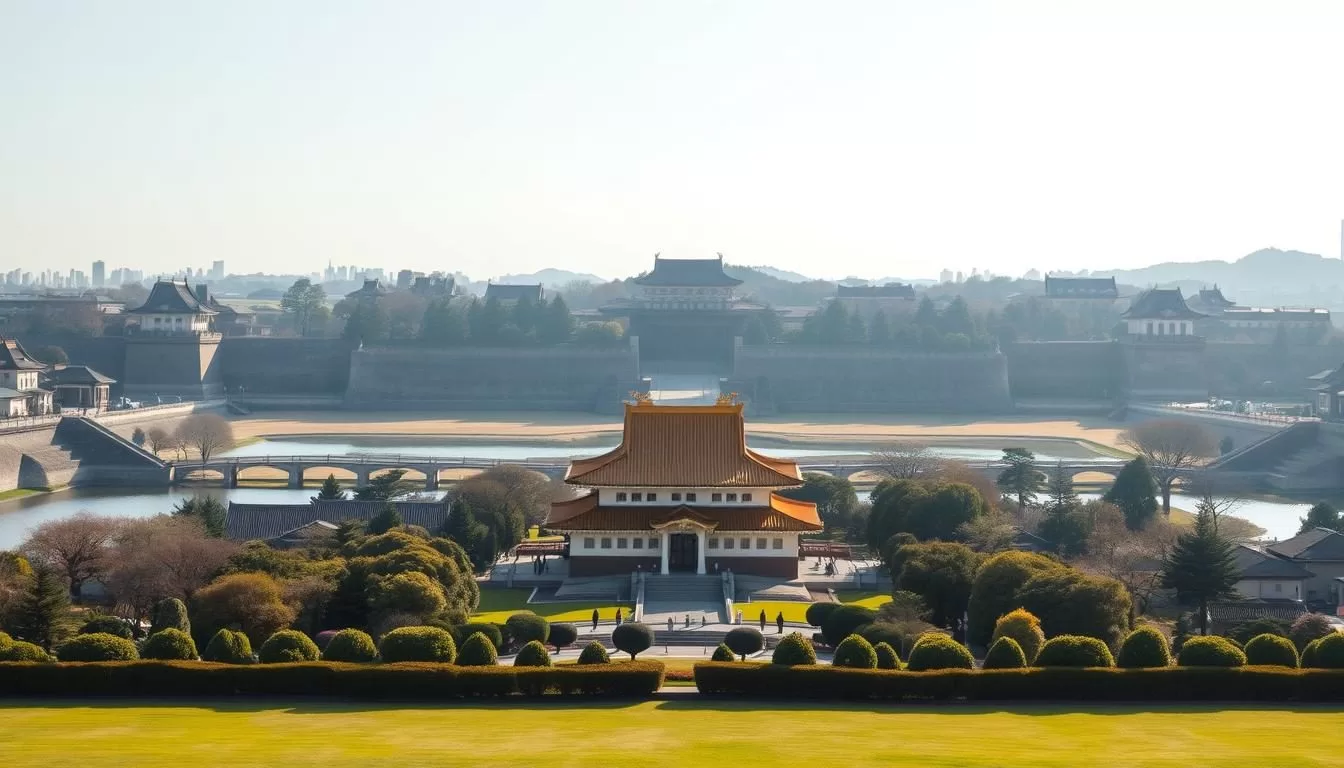✓ Tours & Activities ✓ Tours & Activities
As you step into the heart of Tōkyō, you’ll find the Imperial Palace, a magnificent historical landmark that offers a glimpse into Japan’s rich imperial heritage. Located on the former grounds of Edo Castle, this sprawling complex serves as the primary residence of Japan’s Emperor and the Imperial Family.
As you explore the palace grounds, you’ll discover a perfect blend of historical significance and natural beauty. This comprehensive guide will walk you through the best experiences at the Imperial Palace, helping you plan an unforgettable visit to one of Tōkyō’s most iconic destinations.
Discovering Tokyo’s Imperial Palace: A Historical Overview
As the primary residence of the Emperor and his family, the Imperial Palace is a symbol of Japan’s rich history and cultural heritage. The palace grounds are home to the residence of Emperor Naruhito and his family, along with buildings designated for official duties and ceremonies, and the Imperial Household Agency.
From Edo Castle to Imperial Residence
The Imperial Palace has a storied past, dating back to the Edo period when it served as Edo Castle, the seat of the Tokugawa shogunate. After the Meiji Restoration, it became the Imperial Palace, the main residence of the Emperor. site for various ceremonies and official events.
The Significance of the Palace in Modern Japan
The Imperial Palace remains a central figure in modern Japanese society, hosting important state functions, diplomatic receptions, and traditional ceremonies. The palace represents a connection between Japan’s ancient traditions and its contemporary identity. Here is a summary of its significance:
| Aspect | Description | Significance |
|---|---|---|
| Residence | Primary residence of Emperor Naruhito and his family | Symbol of imperial heritage |
| Official Duties | Venue for state functions and diplomatic receptions | Central to modern Japanese society |
| Cultural Significance | Connection between ancient traditions and contemporary identity | Reflects Japan’s respect for its history |
The careful preservation of the palace and its traditions reflects Japan’s deep respect for its imperial heritage. As you explore the Tokyo Imperial Palace, you’ll gain insight into its historical significance and ongoing importance in modern Japan.
Planning Your Visit to the Imperial Palace
To make the most of your visit to the Imperial Palace, some planning is essential. The Imperial Palace is a significant historical site and a popular tourist destination in Tokyo, Japan.
Best Times to Visit
The best time to visit the Imperial Palace is during the spring or autumn seasons when the weather is mild and comfortable. Avoid visiting during peak travel seasons if you prefer smaller crowds.
Access Information and Transportation Options
To get to the Tokyo Imperial Palace, you can use public transportation. The nearest subway stations are Nijubashi-mae Station on the Chiyoda Line, Otemachi Station on the Marunouchi, Tozai, Chiyoda, Hanzomon, and Toei Mita Lines, or Takebashi Station on the Tozai Line. From these stations, it’s a short walk to the palace.
Entry Requirements and Visitor Guidelines
Before entering the Imperial Palace, visitors are required to undergo a security check and obtain an entry card at the ticket counter. Key guidelines include:
– Entry to most areas is free, but specific procedures apply depending on the section you’re visiting.
– For the East Gardens, you’ll receive an entry token that must be returned when you exit.
– Guided tours of the inner palace grounds are available, but advance registration is recommended as only 120 guests are accepted daily.
– Photography is generally permitted in outdoor areas, but check for signage before taking pictures in certain buildings or sections.
– Respectful behavior is expected, including proper disposal of trash and staying on designated paths.
Exploring the East Gardens: A Natural Oasis
With its beautifully maintained landscapes and historical landmarks, the East Gardens are an oasis in the heart of Tokyo. As you explore this serene environment, you’ll discover a blend of natural beauty and historical significance that makes the East Gardens a compelling part of any visit to the Imperial Palace.
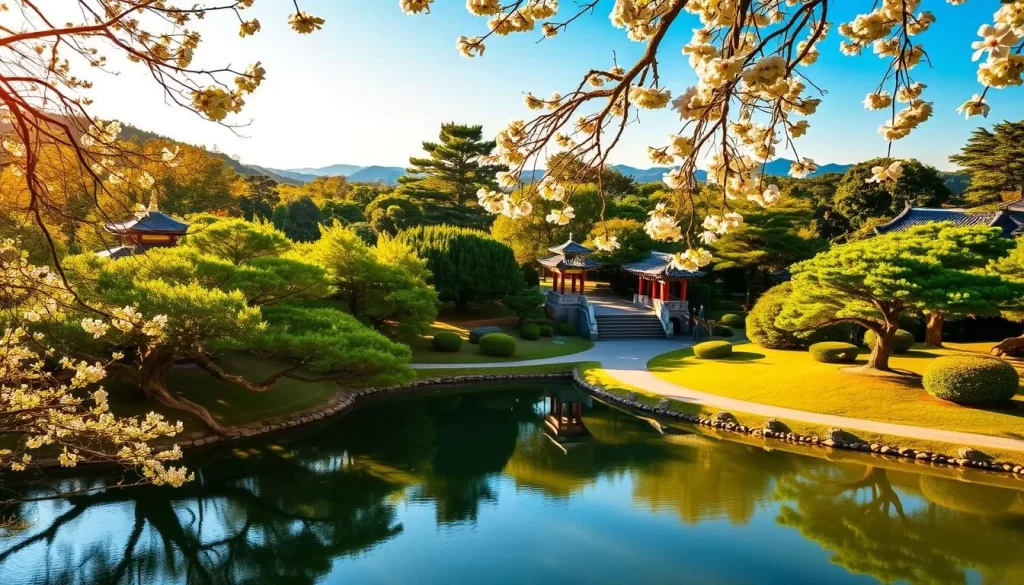
Highlights of the Honmaru and Ninomaru Areas
The Honmaru area, with its lawn and the imposing foundations of the former castle tower, offers a glimpse into the historical significance of the site. The tenshudai, or castle tower foundations, remind visitors of the area’s past as the tallest castle tower in Japan, albeit one that stood for only 19 years before being destroyed in a fire in 1657.
The gardens preserve several historical structures, including gates, guardhouses, and bridges that showcase the architectural style of feudal Japan.
Seasonal Flowers and Historic Remnants
The East Gardens transform with the seasons, offering a variety of botanical displays throughout the year. From plum blossoms in February to cherry blossoms in April, irises in June, and vibrant autumn foliage in November, the gardens are a treat for visitors. You can also admire the impressive stone walls that once supported the castle structures, a testament to the engineering skills of the time.
As you walk through the grounds, informative signage helps you understand the historical significance of various spots, creating a compelling narrative of Japan’s transition from feudal to modern times.
Imperial Palace, Tōkyō, Japan: Best Things to Do – Top Picks
As you explore the Tokyo Imperial Palace, you’ll discover a wealth of exciting activities to make your visit unforgettable. The palace complex is steeped in history and offers a unique blend of traditional Japanese architecture and beautiful gardens.
Viewing the Iconic Nijubashi Bridge
One of the top attractions is the iconic Nijubashi Bridge, a must-visit spot for any traveler. This double-arched bridge is not only a great spot for photography but also offers a glimpse into the palace’s rich history. You can admire the bridge’s unique architecture and take in the surrounding scenery.
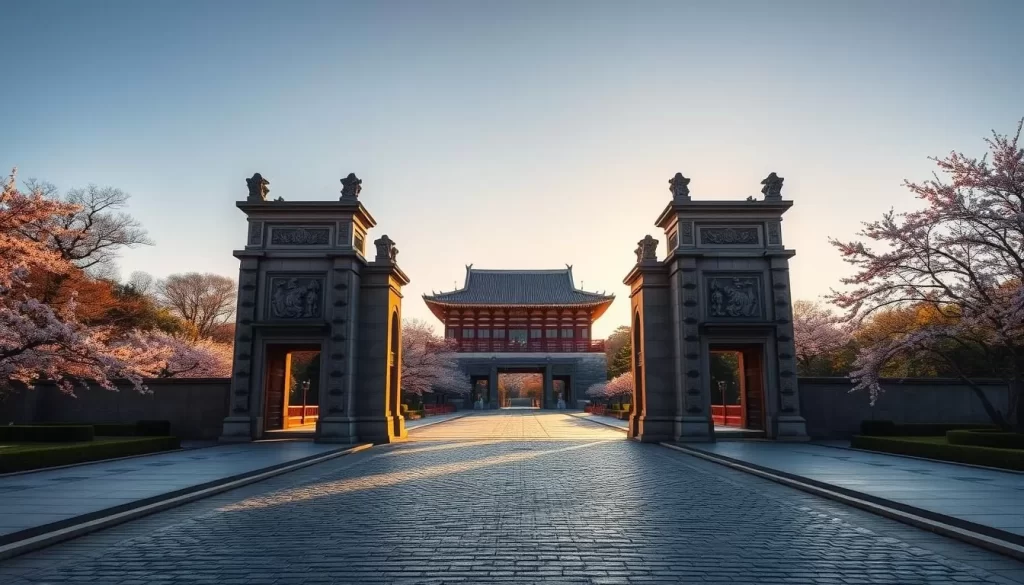
Walking the Palace Moat Circuit
Take a leisurely stroll along the Palace Moat Circuit, which surrounds the Imperial Palace. This scenic walk offers a serene escape from the bustling city and provides a unique perspective on the palace’s walls and gates. You’ll have the opportunity to appreciate the intricate stonework and historic significance of the palace’s defenses.
Photographing the Historic Gates and Walls
The Imperial Palace grounds feature several historic gates, including the imposing Ote-mon Gate, which showcases traditional Japanese castle architecture. You’ll be amazed by the massive walls surrounding the palace, with their carefully fitted stones creating sloping structures that have withstood centuries of earthquakes and natural disasters. These structures offer excellent photography opportunities, capturing the essence of feudal Japan’s defensive architecture.
Joining a Guided Tour of the Inner Palace Grounds
For a more immersive experience, visitors can opt for a guided tour that explores the Imperial Palace’s inner grounds. These tours offer a unique opportunity to witness the palace’s historical and cultural significance up close.
Reservation Process and Tour Details
The guided tours of the Imperial Palace are available at 10 am and 1:30 pm. They are conducted in both Japanese and English, with headsets available in a few other languages to cater to a broader audience. The tour duration is approximately 75 minutes, during which you will visit 11 different spots within the palace grounds, starting from the Kikyomon Gate.
What You’ll See on the Official Palace Tour
During the official palace tour, you’ll have the chance to explore several significant locations. Some of the highlights include:
- Visiting the Fujimi-yagura (Mt. Fuji-view Keep), one of the few remaining original structures from the Edo period.
- Walking along the picturesque Hasuikebori (Lotus Moat), where your guide will explain the historical significance of the palace’s water defenses.
- Viewing the modern Imperial Palace buildings where the emperor conducts official business.
- Stopping at important gates and bridges, such as the Seimon Testubashi Bridge and the Fujimitamon Defense Gate.
Throughout the tour, knowledgeable guides will provide historical context and interesting anecdotes about the imperial family and palace traditions, enhancing your understanding of this important cultural site.
Experiencing Kitanomaru Park and Its Attractions
Kitanomaru Park, situated adjacent to the Imperial Palace East Gardens, offers a unique blend of culture, sports, and education. This former site of the Edo-era bodyguards’ residences is now a public park, providing a serene escape from the bustling city.
The National Museum of Modern Art
The National Museum of Modern Art is a must-visit attraction in Kitanomaru Park, boasting an impressive collection of Japanese modern and contemporary art.
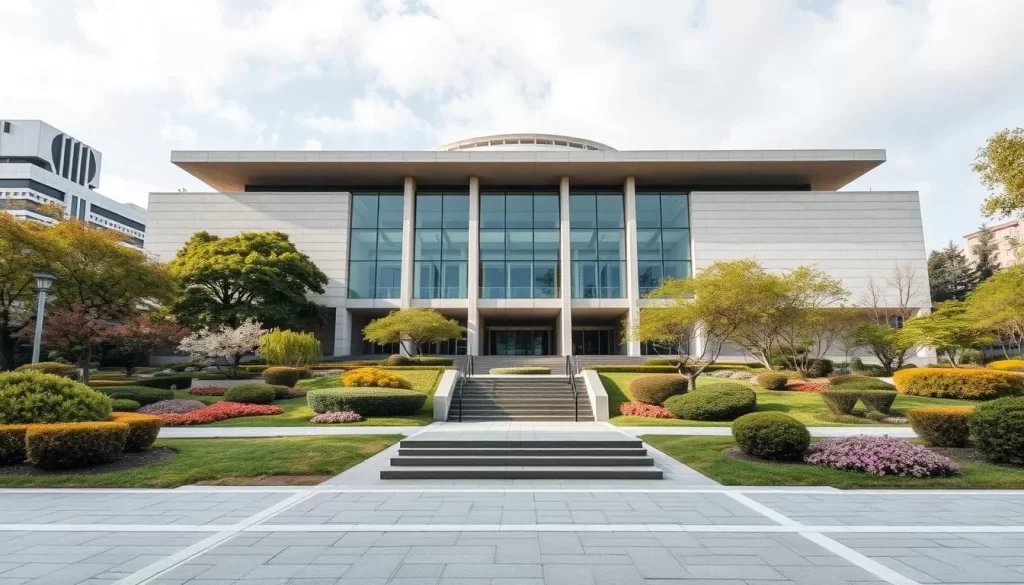
Nippon Budokan: Sports and Concert Venue
Nippon Budokan, located within Kitanomaru Park, is a famous venue that has hosted numerous significant sports events and concerts since its opening in 1964 for the Tokyo Olympics.
Science Museum for Families
The Science Museum in Kitanomaru Park is an ideal destination for family outings, offering interactive exhibits on science and technology that cater to visitors of all ages. With its reasonable admission prices (¥950 for adults, ¥500-600 for children, and free for those under 3), it’s a great thing to do when visiting Tokyo.
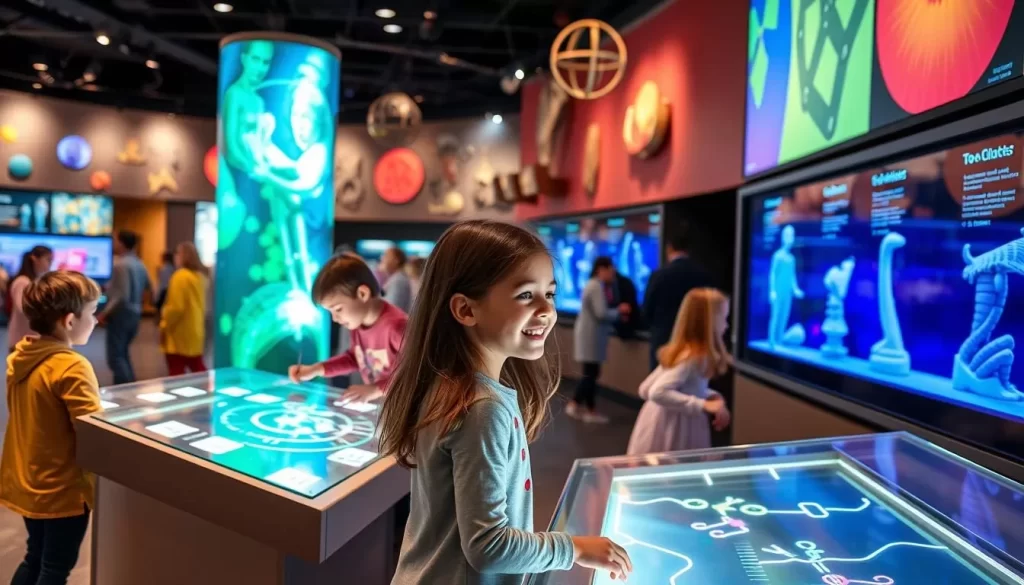
When planning your visit to the Imperial Palace, consider adding Kitanomaru Park to your itinerary to enjoy its diverse attractions and activities, easily accessible from Tokyo Station.
Visiting Kokyo Gaien National Garden
Kokyo Gaien National Garden is a tranquil oasis located near the historic Tokyo Imperial Palace. This beautiful garden provides a serene escape from the bustling city, offering visitors a chance to relax and enjoy nature.
The Famous Seimon Ishibashi Bridge
The Seimon Ishibashi Bridge is a notable landmark within Kokyo Gaien National Garden. This stone bridge offers a picturesque view of the surrounding moat and is a popular spot for photography. As you walk across the bridge, you can appreciate the garden’s tranquil atmosphere and historical significance.
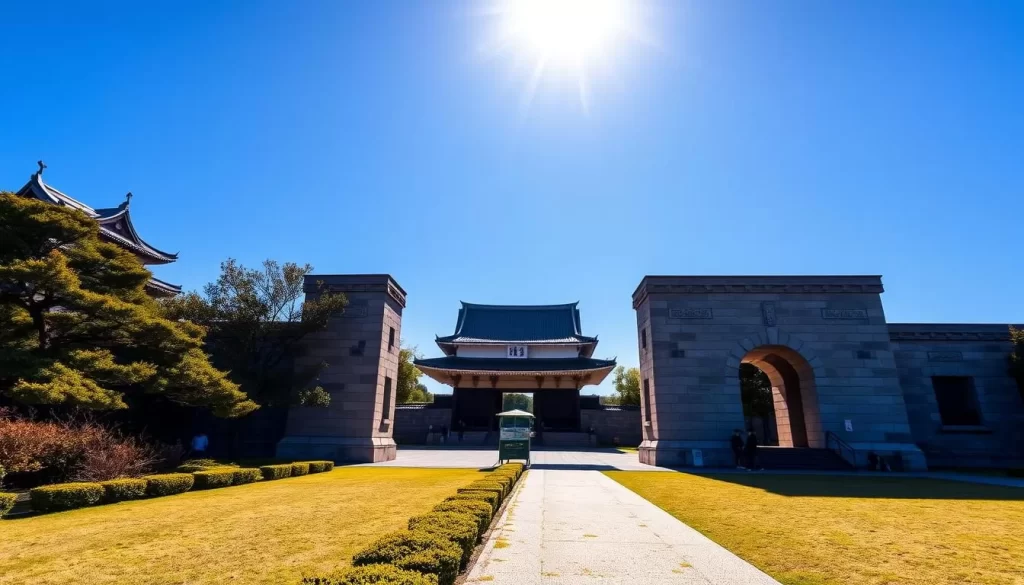
Sakurada-mon Gate and Historical Significance
The Sakurada-mon Gate is one of the few remaining original structures from the Edo period, making it a significant historical landmark. This gate has witnessed important events in Japanese history, including the assassination of Lord Ii Naosuke in 1860. The gate features a small doorway known as kugurido, which served as both an emergency exit and a defensive observation point. Its designation as an Important Cultural Property highlights its historical and architectural significance.
| Landmark | Historical Significance |
|---|---|
| Seimon Ishibashi Bridge | Picturesque stone bridge offering views of the moat |
| Sakurada-mon Gate | Original structure from the Edo period, Important Cultural Property |
Special Events and Seasonal Highlights
One of the most compelling reasons to visit the Imperial Palace is to participate in its special events and enjoy the seasonal highlights. The palace grounds host various events throughout the year, showcasing Japan’s rich culture and traditions.
New Year’s Imperial Greeting
On January 2nd, the Imperial Palace hosts the New Year’s Imperial Greeting, a significant event where the public can pay respects to the Emperor and the Imperial Family. This event is a unique opportunity to experience Japanese culture and tradition.
Visitors can participate in this event by arriving early, as it tends to get crowded. The New Year’s Greeting is a special moment to witness the grandeur of the Imperial Palace.
Emperor’s Birthday Celebration
February 23rd marks the Emperor’s Birthday Celebration at the Imperial Palace. On this day, the public can gather in front of the main palace building to witness the ceremonies and celebrations. It’s a day filled with joy and festivity, making it a memorable experience.
The celebration includes various rituals and ceremonies, offering a glimpse into the traditions of the Japanese monarchy.
Cherry Blossom Season at Chidorigafuchi
Spring brings the beautiful cherry blossoms to the Imperial Palace, particularly along the 700-meter pathway at Chidorigafuchi Moat. This area becomes a popular spot for both locals and tourists, offering breathtaking views of the sakura trees.
You can enjoy the cherry blossoms by walking along the moat or by renting a rowboat from the Chidorigafuchi Boathouse. The evening illuminations during peak bloom create a romantic atmosphere, making it a truly unforgettable experience.
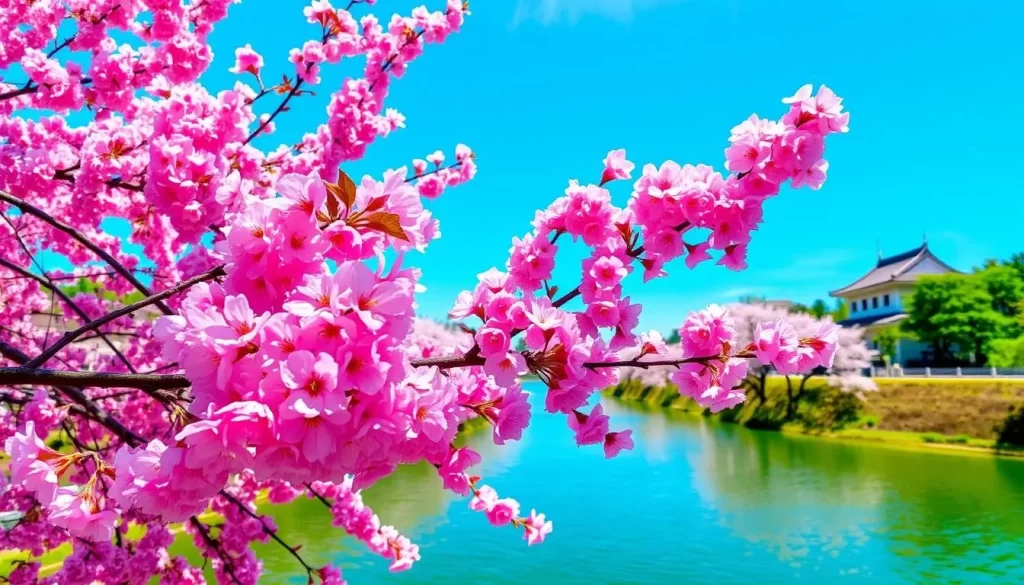
Beyond the Palace: Nearby Attractions Worth Visiting
After exploring the Imperial Palace, you’ll find plenty of other attractions worth visiting in the surrounding area. The neighborhood is rich in history and modern charm, offering a variety of things to see and do.
Tokyo Station and Marunouchi District
Just a short walk from the Imperial Palace, Tokyo Station is a bustling hub that combines historical significance with modern amenities. The Marunouchi District surrounding the station is known for its upscale shopping and dining options, making it a great place to visit for those looking to experience the best of Tokyo.
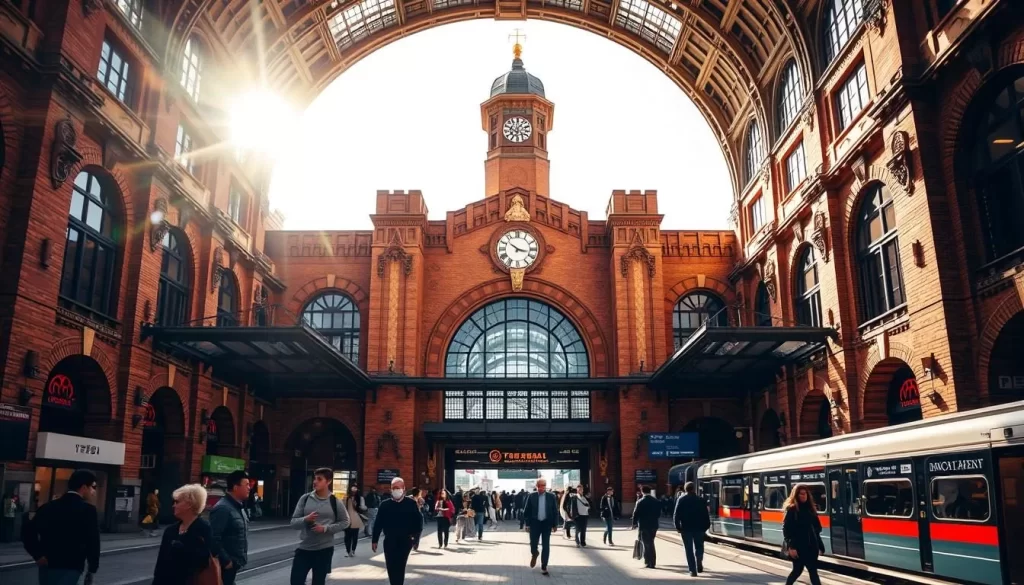
Wadakura Fountain Park
Wadakura Fountain Park is another nearby gem, built in 1995 to commemorate the wedding of the then-Crown Prince Naruhito and Princess Masako. This modern park features a striking waterfall and numerous fountains, creating a refreshing atmosphere, especially during Tokyo’s humid summer months. The park’s design theme, “Continuity and New Development,” reflects the balance between tradition and progress that characterizes modern Tokyo, echoing the spirit of the Edo period‘s legacy in the city.
- Enjoy the impressive main waterfall and various fountains.
- Experience the park’s enchanting evening illuminations.
- Relax in the green spaces and benches provided.
Conclusion: Making the Most of Your Imperial Palace Visit
As you conclude your visit to the Imperial Palace, you’ll have experienced the essence of Tokyo’s rich history and cultural heritage. To make the most of your time, consider combining a guided tour of the inner grounds with exploration of the East Gardens and a walk along the moat circuit. Don’t miss trying some of the excellent street food options available near Tokyo Station. Plan your visit to coincide with seasonal highlights like cherry blossoms or autumn foliage for spectacular photo opportunities.
By doing so, you’ll not only have visited the Imperial Palace but also immersed yourself in the unique blend of tradition and modernity that defines Tokyo.
The above is subject to change.
Check back often to TRAVEL.COM for the latest travel tips and deals.
